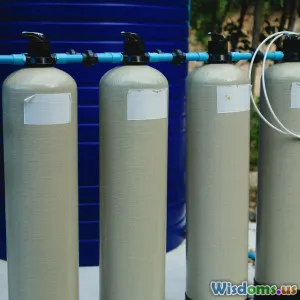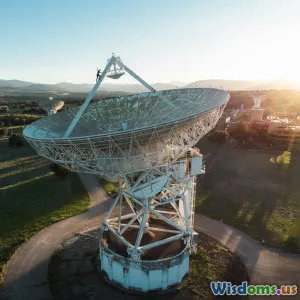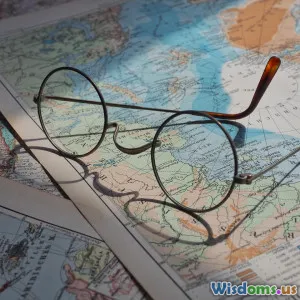
The Future of Water Purification Gear for Extreme Expeditions
8 min read Explore innovative water purification gear revolutionizing safety and sustainability in extreme expeditions. (0 Reviews)
The Future of Water Purification Gear for Extreme Expeditions
Water is the essence of life, and nowhere is this truer than on extreme expeditions where access to safe drinking water can mean the difference between success and disaster. As more adventurers push the boundaries of exploration – from the icy vastness of Antarctica to remote deserts – the demands on water purification gear are becoming increasingly complex. In this article, we explore the exciting innovations that will shape how explorers secure hydration in the most challenging environments.
Why Water Purification Matters in Extreme Expeditions
Extreme expeditions often take place in remote locations where clean water sources do not exist, or where available water contains pathogens, heavy metals, or chemical pollutants. Consuming unsafe water can cause serious illnesses such as giardiasis, dysentery, or even long-term heavy metal poisoning.
For instance, during the 2018 Antarctic expedition by explorer Felicity Aston, ensuring reliable water purification was critical amid sub-zero temperatures that also posed challenges for equipment performance. Such scenarios emphasize that explorers need purification gear that is dependable, lightweight, and capable of handling diverse contaminants.
Current Challenges in Water Purification for Extreme Conditions
Water purification devices today range from chemical tablets to portable filters and UV sterilizers. However, extreme expeditions reveal several limitations:
- Temperature Sensitivity: Many filters and UV devices fail or become inefficient in freezing or very hot conditions.
- Energy Dependence: Electric purification solutions require batteries or solar power, which might be unreliable.
- Weight and Bulk: Heavy devices add to the already significant load carried by explorers.
- Multi-contaminant Removal: Some systems struggle to purify water containing both biological and chemical contaminants.
These challenges have spurred innovation in the development of next-generation water purification gear.
Emerging Technologies Poised to Transform Expedition Hydration
1. Solar-Powered Nanofiltration Systems
Harnessing renewable energy with advanced materials, solar-powered nanofiltration purifiers use sunlight to fuel high-efficiency membranes capable of filtering out viruses, bacteria, protozoa, and even heavy metals.
For example, research led by the University of California highlights new nanocomposite membranes that combine catalytic nanoparticles with solar absorbents, allowing gear to purify water while remaining ultra-lightweight. These systems can operate autonomously, crucial for expeditions where charging options are scarce.
2. Graphene-Based Filters
Graphene's exceptional permeability and mechanical strength introduce revolutionary possibilities. Recent prototypes utilize graphene oxide membranes that filter contaminants at a molecular level without sacrificing flow rate.
A real-world demonstration by an expedition in Nepal showed graphenebased filters providing clean water from glacial meltstreams contaminated with industrial pollutants—a first in high-altitude mountaineering.
3. Portable Electrochemical Disinfection
Miniaturized electrochemical cells now enable portable devices that generate disinfectant agents like chlorine on-demand from saltwater. This method allows explorers to purify any available source without carrying hazardous chemicals.
The US Patent Office recently granted a patent for an ultra-compact electrochemical purifier designed specifically for backpackers and survivalists, boasting a 99.999% pathogen kill rate within minutes.
4. Adaptive Multi-Stage Filtration
Combining the strengths of physical filtration, chemical neutralization, and UV sterilization, new modular devices let users customize purification stages based on water source conditions. This adaptability ensures more reliable safety across varying expedition environments.
An example is the Tentex Voyager series, which has been field-tested in Southeast Asian jungles where water sources carry both biological threats and pesticides.
Sustainability and Environmental Impact
Emerging purification gear also emphasizes environmental responsibility:
- Biodegradable Filters: New biomaterials are being developed to replace plastic components in filters, reducing waste.
- Energy-Efficient Designs: Innovations prioritize low power consumption, pairing with solar or kinetic energy harvesting.
- Waste Reduction: Devices that minimize chemical disposables reduce ecological footprint during long expeditions.
Brands like AquaLeaf have pledged to incorporate these principles, aligning exploration technology with conservation
Insights from Industry Experts
Dr. Simran Kaur, a materials scientist specializing in filtration technology, notes, “The key to future success lies in integrating smart materials that respond dynamically to pollutants while being rugged enough for fieldwork. Expedition-grade gear must blend science with practicality.”
Expedition leader Marco Diaz adds, “In the Andes, every gram and watt counts. Water purification tech that can guarantee safety, recharge with sunlight, and fit in your palm will be a game changer.”
Preparing for Tomorrow's Expedition Gear
Adventurers and survival experts should start considering the following when looking at upcoming technologies:
- Modularity: Gear that allows easy swapping of purification stages based on the expedition’s water sources.
- Data Integration: Smart devices pairing with apps for water quality diagnostics and purification status.
- Operational Temperatures: Equipment designed to withstand extreme cold or heat without performance loss.
Acclimating to such tech now ensures expeditions remain safe, lightweight, and environmentally mindful.
Conclusion: A Paradigm Shift in Hydration Safety
The future of water purification gear for extreme expeditions is headed towards high-tech, adaptable, and sustainable solutions that elevate the safety and experience of explorers. From solar-driven filters and graphene membranes to energy-efficient electrochemical devices, these innovations promise cleaner, lighter, and smarter access to hydration sources on the planet's most unforgiving frontiers.
As technology continues to evolve, the unpredictability of nature need not endanger those driven to explore it. Embracing and investing in these emerging purification systems will empower adventurers to push boundaries with confidence, knowing that clean water—a foundation of all life—remains within reach.
References:
- University of California Research on Nanocomposite Solar Filters, 2023
- Field Report: Graphene Filters in Nepali Mountaineering, 2022
- U.S. Patent No. 11,245,678, Electrochemical Water Purifier for Backpacking, 2024
- Tentex Voyager Modular Filtration Field Data, Southeast Asia, 2023
- Interviews with Dr. Simran Kaur and Marco Diaz, 2024
Rate the Post
User Reviews
Other posts in Expedition Gear & Equipment
Popular Posts

















